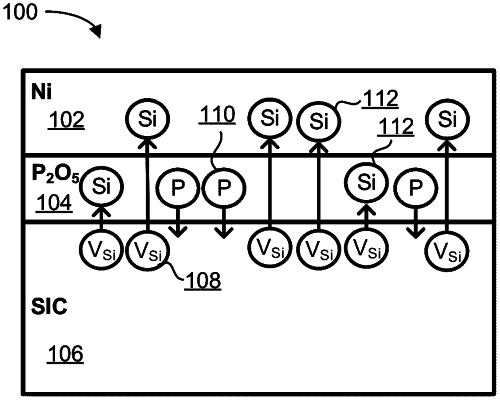| CPC H01L 29/2003 (2013.01) [H01L 21/2258 (2013.01); H01L 29/45 (2013.01)] | 27 Claims |

|
1. An apparatus for enhancing impurity diffusion in a substrate material, comprising:
a heterostructure comprising,
a substrate comprising a Group-III-nitride material;
a source layer positioned on a surface of the substrate, wherein the source layer extends the entire length of the substrate, the source layer comprising a dopant including a magnesium compound; and
a conductive cap layer positioned on the source layer, the conductive cap layer comprising at least one material selected from the group consisting of: a metal, a transparent conductor material, and a conductor material,
wherein the conductive cap layer has at least one element of the Group-III-nitride material originating from the substrate,
wherein a deposition thickness of the heterostructure is in a range of 1 nanometer to 5000 nanometers.
|